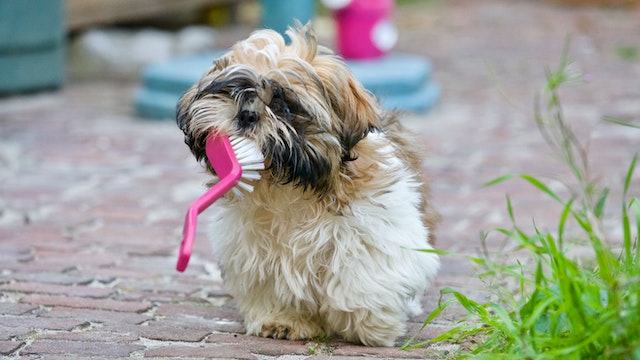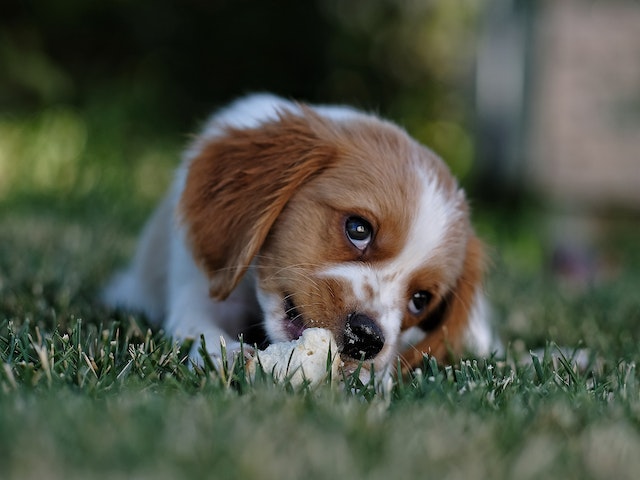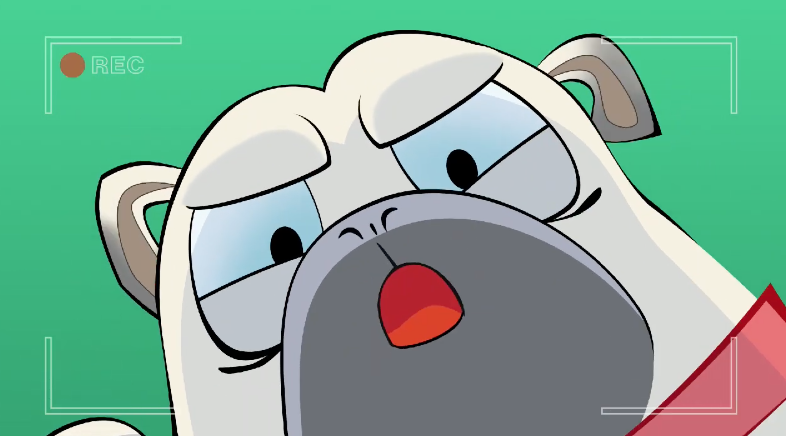

 Back
Back
All About Teething in Puppies
The teething process sees puppies shed their first set of teeth and grow an adult set. It’s often a painful process for dog and owner alike, with puppies nursing sore gums and owners managing upset, unruly pets.

Writer Animalia Team

A puppy brings boundless joy, love, and affection to any family, but new pet owners should expect some growing pains during the early stages. The teething process sees puppies shed their first set of teeth and grow an adult set. It’s often a painful process for dog and owner alike, with puppies nursing sore gums and owners managing upset, unruly pets.
While chewing is expected behavior for dogs of every age, teething puppies are especially likely to chomp. The action may offer relief for puppies, but it can frustrate first-time owners as they struggle to “puppy proof” their homes.
When does teething start? How can owners help ease their puppies’ pain while mitigating the damage of destructive chewing? When should a veterinarian step in? Here’s everything you need to know about teething and nipping in puppies.
What are the stages of teething in puppies?
Puppies have 28 deciduous teeth, sometimes referred to as primary or “baby” teeth. This initial set of chompers begins to emerge as early as two weeks after a dog is born.. Between six to 12 months of age, they lose their primary teeth and grow their 42 adult teeth in the following stages: Here’s a general description of the teething stages:
- 2 to 4 weeks: The first baby teeth start to appear
- 8 weeks (two months): All baby teeth have grown
- 12 to 16 weeks: Adult teeth begin to appear
- 6 months and above: All adult teeth have erupted
Incisors will emerge first, emerging while puppies are still in the care of their mothers or a breeder. These chisel-shaped teeth are followed by canines, premolars, and finally molars. Since breeds typically put dogs up for adoption around two months of age, owners will meet their new pets during a critical stage in the teething process.
Puppies often harmlessly swallow teeth as they lose them. Owners should also keep an eye out for tiny, discarded teeth as they get to know their puppies. By the time they’ve finished teething, a growing puppy’s mouth should include the following adult teeth:
- 6 upper incisors and 6 lower incisors for grasping
- 2 upper canines and 2 lower canines for tearing
- 8 upper premolars and 8 lower premolars for grinding
- 4 upper molars and 6 lower molars for grinding
Signs your puppy is teething
Puppies naturally nip and chew as they explore their surroundings. This behavior becomes more common during teething, as dogs chew to relieve discomfort. It may be the first indication an owner gets that their dog is going through teething. Other signs that may indicate teething include:
- Drooling
- Blood stains on toys
- Red or swollen gums
- Whining or crying
- Lack of appetite or slower eating than normal
- Irritability
While occasionally unpleasant, the teething process is both natural and unavoidable. It is not usually necessary for pet owners to intervene. For example, pet owners are not advised to attempt to manually remove loose teeth from their dog’s mouth. A startled dog may bite their owner or experience complications like infections due to incompletely removed teeth.
Managing your puppy’s teething discomfort
Behaviors like whining, food avoidance, and destructive chewing could all indicate that teething is causing mouth and gum pain. Minor pain is not usually caused for a visit to the vet. Most pet owners can alleviate symptoms and nurse puppies through their teething periods at home.
Durability is key when choosing chew toys. Puppies need toys that are soft enough for their delicate mouths, but capable of withstanding consistent chewing. Toys without the requisite toughness could break into smaller pieces and present choking hazards. It’s also crucial that toys are engaging enough to distract dogs from other targets. Engaging patterns and textures can keep dogs chewing while also discouraging biting. Freezable toys can offer extra relief, cooling puppies’ irritated gums.
How to stop your puppy from nipping and biting
Teething can turn a house upside down when puppies whine at all hours and chew on clothing and furniture. While owners can’t stop puppies from chewing altogether, they can offer distractions in the form of chewable toys.
When puppies show particular interest in household items, owners can take precautionary “puppy proofing” steps. These may include storing items like shoes and remotes where pets can’t reach them, securely closing all doors, and hiding wires and cords out of reach.

In extreme cases, pet owners may turn to deterrent sprays to keep dogs away from off-limits areas and items. These sprays have an unpleasant taste that can often deter a teething dog’s bites. Behavioral training may prove necessary in instances where dogs are especially prone to destructive chewing.
When is it necessary to see the vet?
Though teething tends to come and go without the need for veterinary intervention, pet owners should keep an eye out for certain warning signs. Excessive bleeding and drooling, noticeably irritated gums, or serious behavioral changes could be cause for serious concern.
Sometimes teeth stick around longer than they’re supposed to. Veterinarians call primary teeth that won’t fall out “persistent” teeth. The presence of these teeth can cause complications related to overcrowding and will generally require extraction by a veterinary dentist. Owners should get comfortable getting up close and personal with dogs to make sure teeth are falling out and growing in as expected.
How to care for your puppy’s adult teeth
Once a puppy has grown its full set of permanent teeth, owners should administer dental care early and often. Starting early helps accustom dogs to the experience of having hands in around their mouths. Regular attention discourages bad breath as well as a range of oral and dental conditions. By taking care of their dog’s teeth at home, owners take a more proactive approach to their pet’s overall well-being. Brushing could make the difference in saving trips to the vet as well as hefty medical bills.

Dog owners should take care to brush with soft-bristled toothbrushes and only use canine toothpaste. Though it may look like a passable substitute, human toothpaste can cause stomach problems for pups. If regular brushing proves challenging or impossible, owners can look for special dental treats and chews. These can freshen breath, discourage plaque growth, and even sometimes supplement dogs with essential vitamins.
Finally, it’s essential to have regular checkups with the vet for preventive care. Though teething only lasts for a few months, promoting a dog’s dental health is a lifelong concern for owners. . Get a quote from Animalia today to learn more.





We offer the most comprehensive coverage
out there
Having Animalia is like a top-of-the-line
Rolls-Royce with a swimming
pool in the trunk.



Get your pet insurance quote
Is your pet a...
- Dog
- Cat
What is your pet's name?
Zip code




